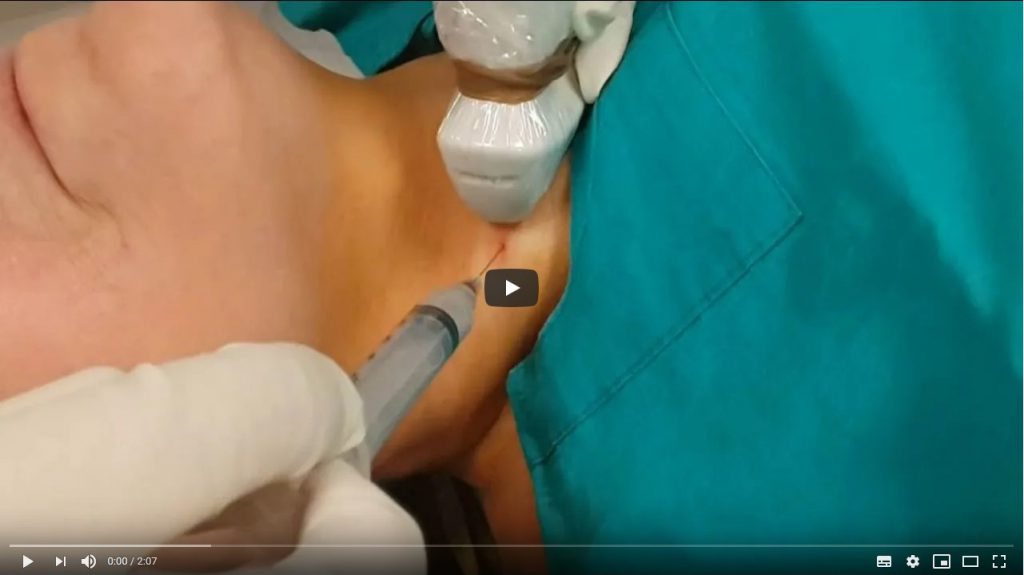Thyroid biopsy is performed to understand whether the nodule or nodules detected in the thyroid gland are benign or malignant. Fine-needle aspiration biopsy (FNAB) is the most commonly performed biopsy in the thyroid. In FNAB, a very thin needle is entered into the nodule in the thyroid under ultrasound guidance, and the cells are sucked into the needle from various parts of the nodule by applying vacuum with an injector. Then, these cells are spread on small glasses called slides and examined with a microscope by the pathologist.
FNAB has an accuracy rate of over 90% and is currently the standard biopsy method for the evaluation of thyroid nodules. However, FNAB is a procedure that must be applied carefully and accurately; During FNAB, if possible, cells should be taken from all suspicious nodules and from different parts of each nodule. In addition, special care should be taken not to get blood into the syringe while doing this. A careless and careless FNAB may cause a cancerous nodule to be missed or an unnecessary operation for the patient due to a non-existent cancer.

After FNAB, it can usually be said with certainty whether the nodule is benign or cancerous. However, in 5-10% of the patients, despite a high-quality FNAB, the pathologist cannot make a definitive diagnosis and it is said that there is a suspicion of cancer in the nodule. In such cases, surgery is usually recommended to the patient, but this is not a very correct approach. In such patients, it is necessary to repeat the biopsy. The second biopsy can be done again in the form of FNAB. However, in order to prevent an unnecessary operation, it would be more appropriate to make the second needle with the cutting needle (trukat, core biopsy) method and even to use both FNAB and cutting needle together. When these methods are used, it can be shown that more than half of the patients with suspected cancer at the first biopsy do not actually have cancer, and unnecessary operations can be avoided.


